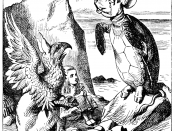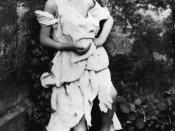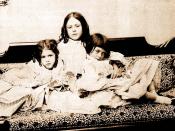A
lice in Wonderland is one of the most often-quoted books in English, up there with the big deals like the Bible and Hamlet. But this most influential story was indeed written down at the request of a little girl. In this children's work, not only do logic and causality work differently in Wonderland, but all the people and animals there seem to be a little bit insane. But there is profundity behind insanity.
Among the lines of illogic language and ridiculous dialogs, you'll find the content of the book--full of events like tea parties, croquet games, and awkward encounters with royalty--are so rooted in Victorian English culture. First of all, many Victorian period daily events are presented as scenes. In chapter 7, Alice is at a Mad Tea-Party, and Tea is a light meal which English people eat in the late afternoon and is not taken so seriously as Victorians did.
As Carroll described, in Victorian time people ate it around 6 p.m. and it includes tea and bread with jam and butter. In chapter 8, Alice is invited to join the Queen's Croquet Game, while Croquet is a well-known lawn game that was very popular in England in Victorian time. It normally involves using mallets to knock balls through little wire arches stuck into the ground. And chapter 11 and 12 show us what is a Victorian court of justice like.
Secondly, many Victorian secrets are hidden in the titles of some characters. One of the three participants at the Mad Tea-Party, the Mad Hatter is a good example. A hatter is a man who makes hats. In nineteenth-century England, the phrase "mad as a hatter" was common because hatters really did often go crazy. The chemical mercury, which was used to cure the felt of...


